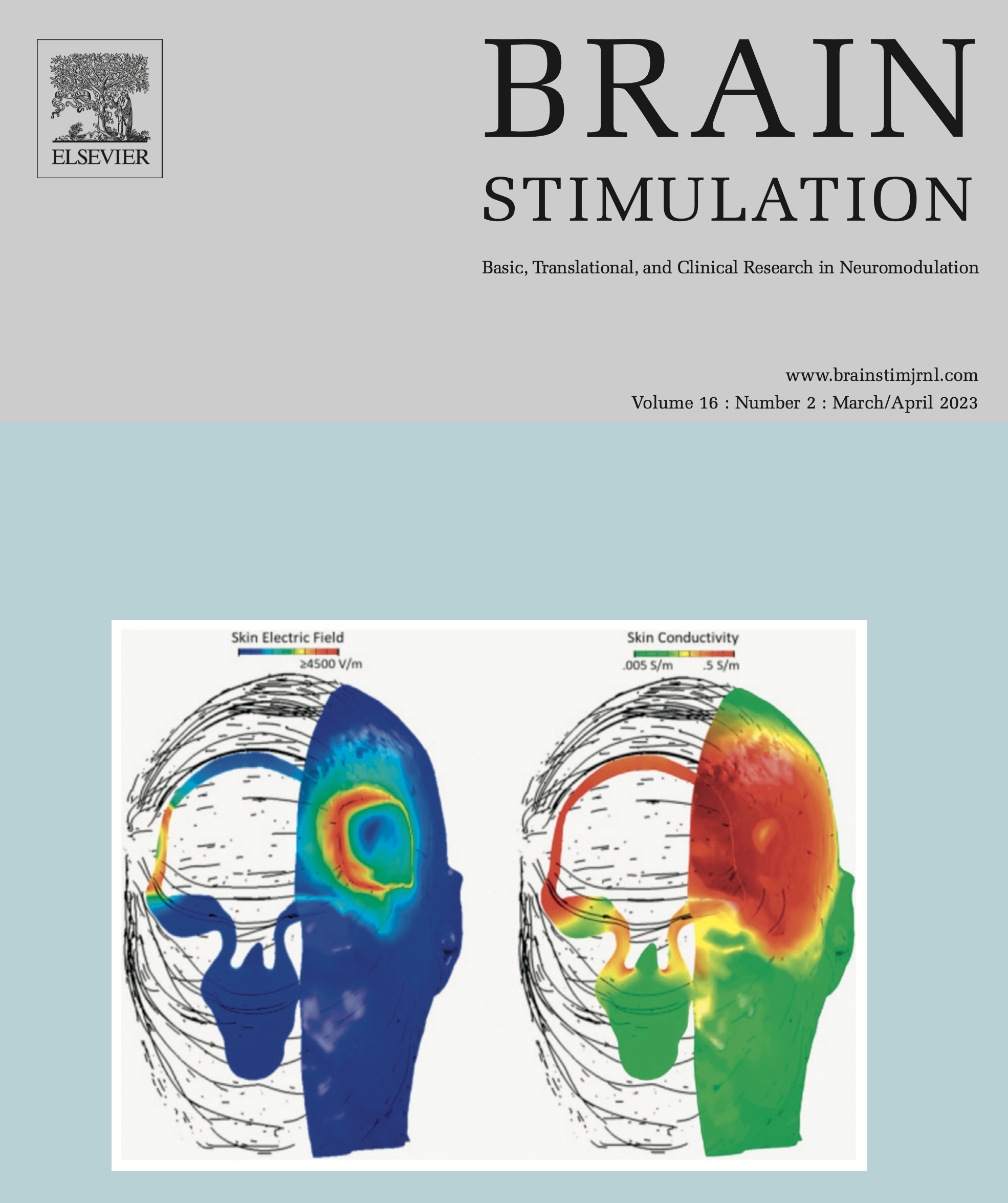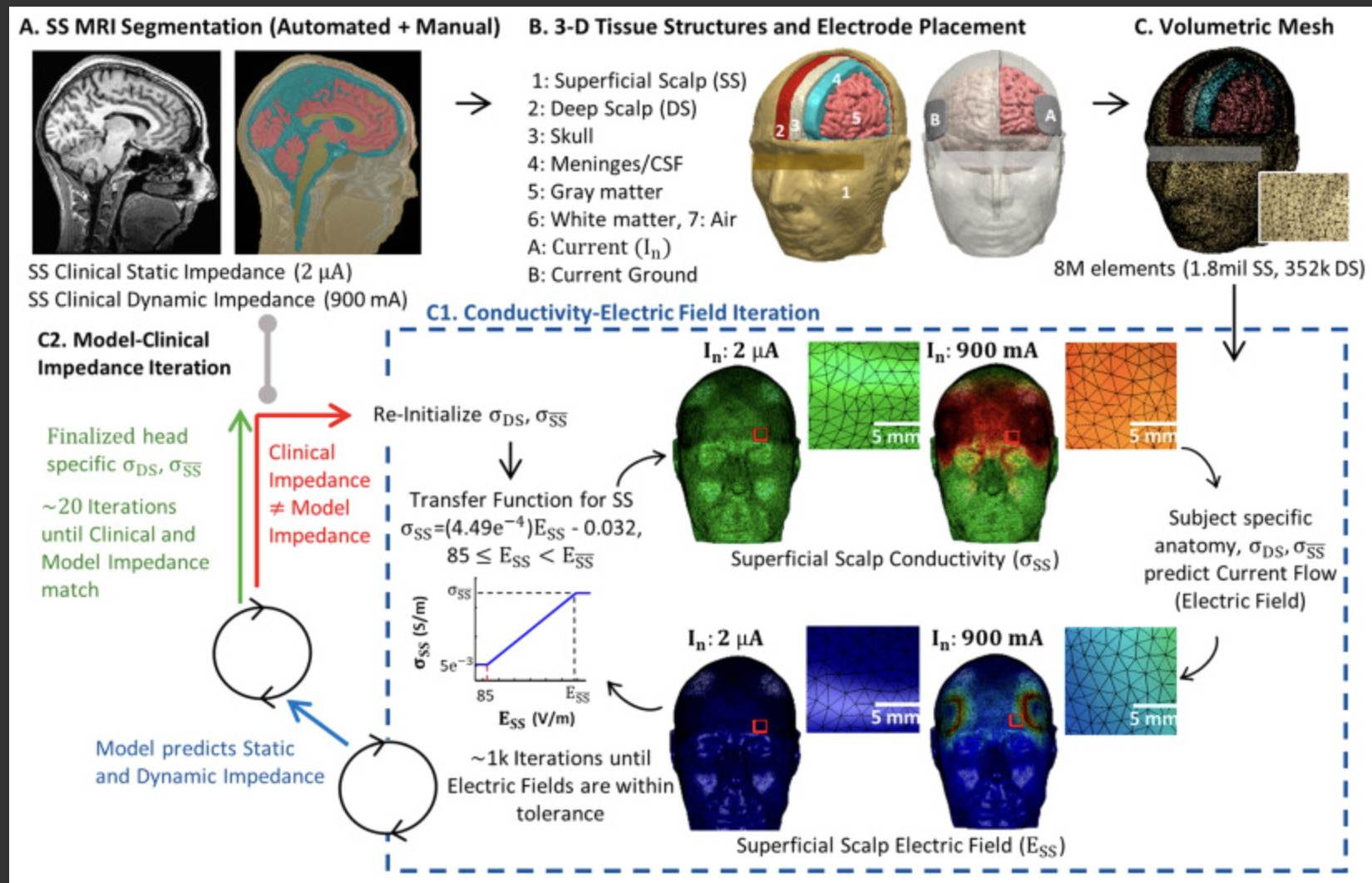(Update) publication: Quasi-static pipeline in ECT modeling
(Update): The articles was featured on the cover of the issue of Brain Stimulation
Unal, G., Poon, C, FallahRad, M., Thahsin, M. Argyelan, M., Bikson, M. Quasi-static pipeline in electroconvulsive therapy computational modeling. Brain Stimulation. DOI: https://doi.org/10.1016/j.brs.2023.03.007 PDF
__________________________________
Why it matters:
As in all neuromodulation domains, computational current flow models of ECT are increasingly used to inform device/therapy optimization and study mechanisms of actions. ECT is unique in applying repeated high-intensity electrical pulse across the skin. The quasi-static assumption is always applied in such models.
But we believe the skin responds in a complex (frequency-specific, intensity sensitive, non-linear) way to the ECT stimulation, which makes the application of the quasi-static assumption problematic.
In this paper, we don't ignore this problem, but address it head on.
Good news: we develop a solution that allows a quasi-static pipeline to be used, under a central (experimentally justified) assumption of a 'representative-frequency'. This "rescues" past ECT modeling efforts, and allows for more realistic consideration of how static-impedance and dynamic-impedance arise and can inform ECT analysis.
__________________________________
ABSTRACT
Background
Computational models of current flow during Electroconvulsive Therapy (ECT) rely on the quasi-static assumption, yet tissue impedance during ECT may be frequency specific and change adaptively to local electric field intensity.
Objectives
We systematically consider the application of the quasi-static pipeline to ECT under conditions where 1) static impedance is measured before ECT and 2) during ECT when dynamic impedance is measured. We propose an update to ECT modeling accounting for frequency-dependent impedance.
Methods
The frequency content on an ECT device output is analyzed. The ECT electrode-body impedance under low-current conditions is measured with an impedance analyzer. A framework for ECT modeling under quasi-static conditions based on a single device-specific frequency (e.g., 1 kHz) is proposed.
Results
Impedance using ECT electrodes under low-current is frequency dependent and subject specific, and can be approximated at >100 Hz with a subject-specific lumped parameter circuit model but at <100 Hz increased non-linearly. The ECT device uses a 2 μA 800 Hz test signal and reports a static impedance that approximate 1 kHz impedance. Combined with prior evidence suggesting that conductivity does not vary significantly across ECT output frequencies at high-currents (800–900 mA), we update the adaptive pipeline for ECT modeling centered at 1 kHz frequency. Based on individual MRI and adaptive skin properties, models match static impedance (at 2 μA) and dynamic impedance (at 900 mA) of four ECT subjects.
Conclusions
By considering ECT modeling at a single representative frequency, ECT adaptive and non-adaptive modeling can be rationalized under a quasi-static pipeline.

